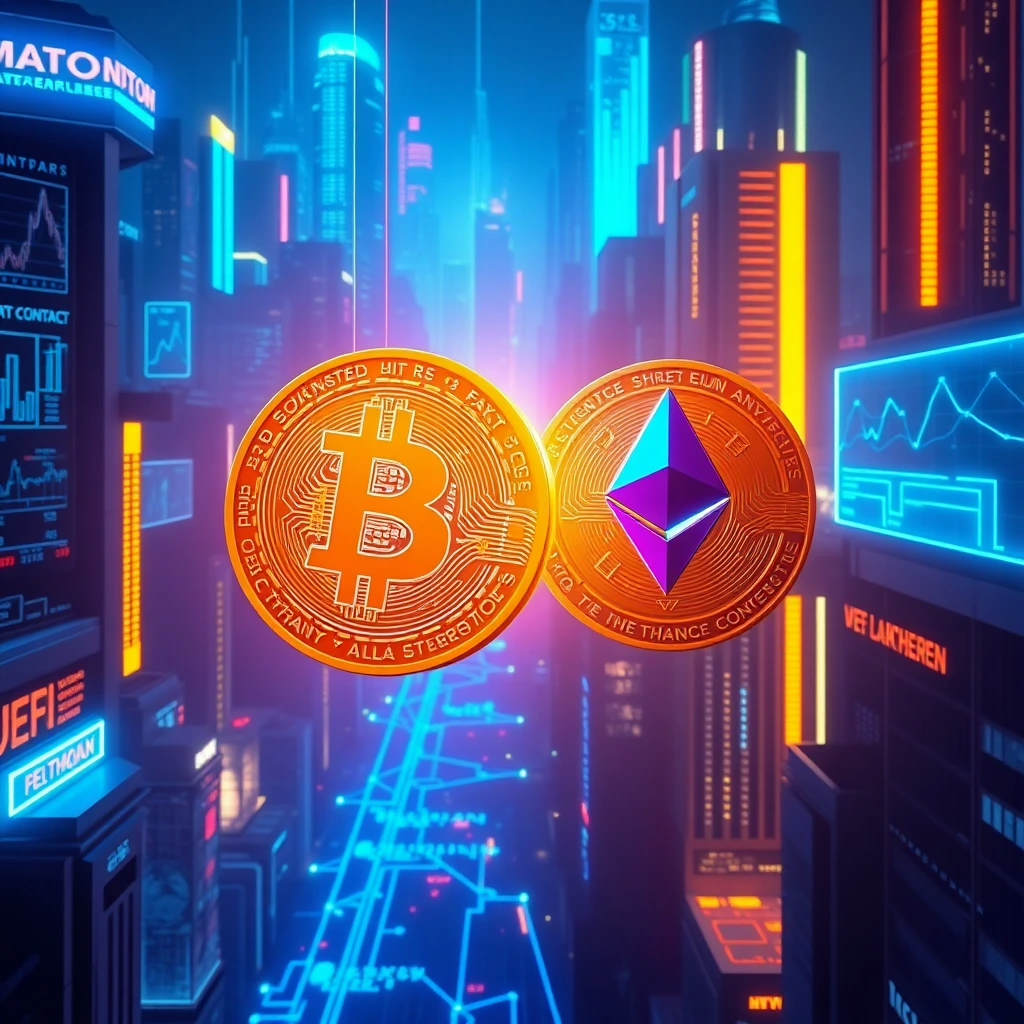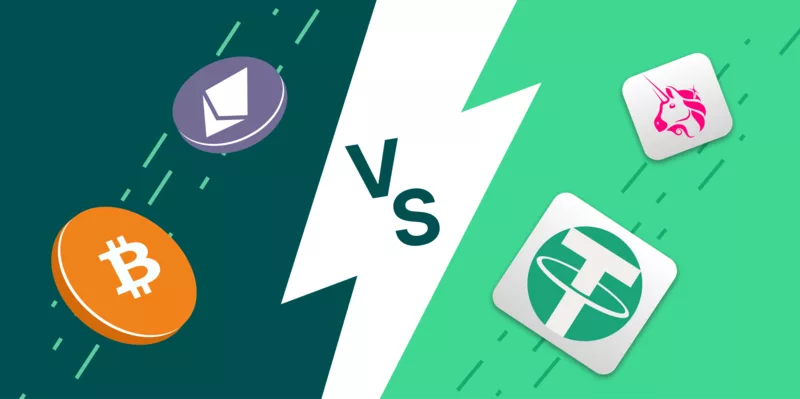Within the crypto universe, coins and tokens are terms that are interchangeably used. However, they refer to two different things. With that being said, here’s a breakdown of the difference between a coin and a token.
What Is a Coin?
Simply speaking, coins are units of cryptocurrency that have their own independent blockchain. They do not share their blockchain with other coins or tokens, and their primary purpose is to be used as currency. A coin can be perceived as a store of value that is primarily used for making investments, or transactions, on the blockchain. Unlike tokens, coins can be created through a process known as mining. It is important to mention that coins can also be used for saving, as their value increases over time.
The most notable examples of coins include the following:
- Bitcoin (BTC): The first ever coin created. Bitcoin is digital currency that uses the Bitcoin blockchain and it’s utilized as a store of value.
- Ethereum (ETH): Native to the Ethereum blockchain. Ether’s primary purpose is to pay for transaction fees, or other computations that are done on the Ethereum network.

In other words, coins are primarily intended to be a form of money, or used to pay for transaction fees on their respective blockchains.
Analogy: Coins are like cash; you can spend or save it.
What Is a Token?
A token can be defined as a digital asset that has been built on top of an existing blockchain and can represent assets, votes, services, and anything else. Tokens do not self-sustain like blockchains do; for them to function, they need a project’s blockchain like Ethereum or Binance Smart Chain or Solana.
Some types of tokens include:
- Utility Tokens: Grant access to services or products. For instance, having the right to participate in community votes or view premium content on a certain site.
- Security Tokens: Grant possession of a value such as a business share or a piece of real estate.
- Governance Tokens: Allow for voting by token holders in regards to how the project or platform should be developed.
Tokens are usually created to represent some significant thing, like ownership of an ecosystem, or a part of an ecosystem.
Example: Having a token is like having a ticket to a concert. Tokens cannot be traded for money, but they allow access into a specified concert.
Key Differences Between Coins and Tokens
| Feature | Coin | Token |
|---|---|---|
| Blockchain | Operates on its own blockchain (e.g., Bitcoin, Ethereum) | Built on top of another blockchain (e.g., Ethereum, Binance Smart Chain) |
| Primary Use | Digital currency or store of value | Represents assets, rights, or access within a specific platform |
| Example | Bitcoin (BTC), Ether (ETH) | Chainlink (LINK), Uniswap (UNI), Tether (USDT) |
| Transaction Fees | Used to pay transaction fees on their blockchain | May be used for specific functions, but not for transaction fees |
Why Does This Matter?
Differentiate coins from tokens, or vice versa, is relevant because this will help you comprehend blocks and how they relate to each other in the ecosystem. Usually, coins have greater use cases than tokens, which are more specialized and tend to be usually tied to specific projects or ecosystems.
Next time someone brings up the discussion of a new token, you know this is likely to be part of a specific project or platform whereas a coin serves as a digital currency or asset standing on its own.
Would you like to dive deeper to the world of cryptocurrency? Leave a comment down below!
Next Post: CEX vs. DEX: The Battle of Cryptocurrency Exchanges
